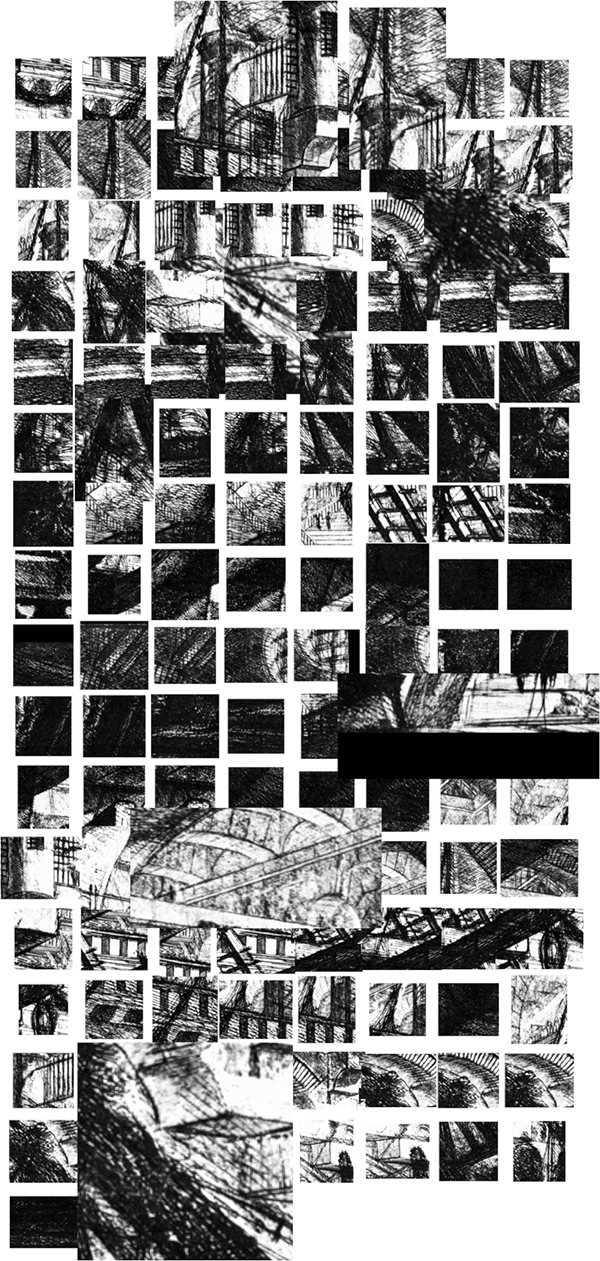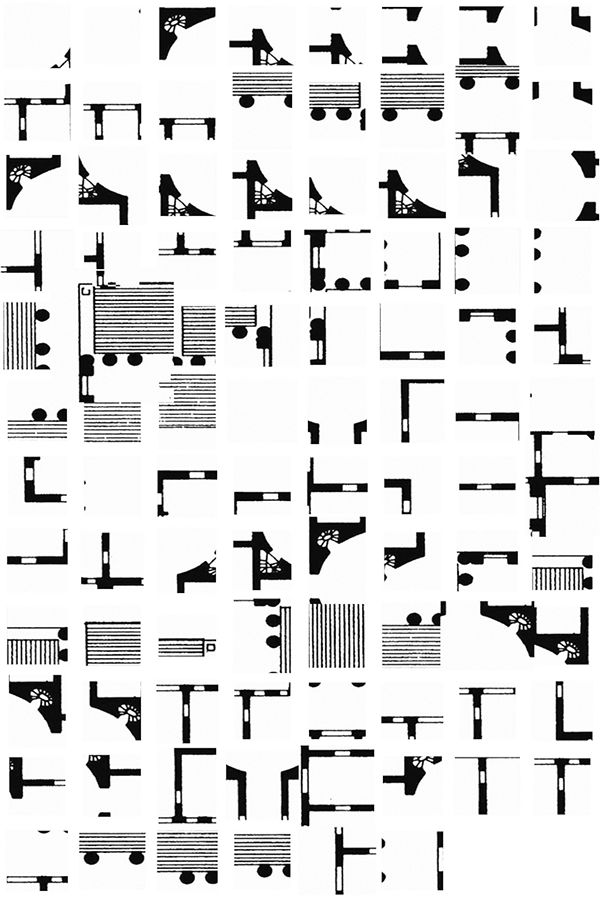
2019
Pure perception, in fact, however rapid we suppose it to be, occupies a certain depth of duration.
Henri Bergson, Matter and Memory
This research reconceives of perceptual depth by integrating Sergei Eisenstein's theory of mise-en-cadre with graphic analyses using eye-tracking data. Contrary to the commonplace understanding of depth-as-distance, it is argued that techniques such as linear perspective simulate a quantitative understanding of depth, whereas depth in perception is fundamentally qualitative. Scanpath information was taken from three recordings, in which subjects viewed a variety of images. Rather than employing eye-tracking as a means to explain perceptual behaviors, it was used to provide an additional perspective into a fundamentally aesthetic problem. Depth is conceived as the collision of intra-image moments that inform a total, yet dynamic 'picture' through a subject's perception.
refiguring depth
← back to research projects
Contents published in Architecture, Futurability and the Untimely: On the Unpredictability of the Past, Ingrid Mayrhofer-Hufnagl (ed.), 2022

PRECEDENT
Influenced by Sergei Eisenstein's idea of the frame and its direct link to montage, this research simulated perceptual areas of interest as filmic cadres, producing composite 'images' that resemble the director's ideation of Japanese drawing exercises.








